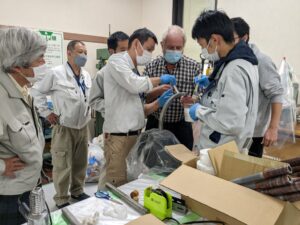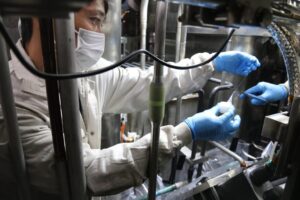When the scaffolding of JT-60SA was lifted, after assembly was completed, there was heightened anticipation in the fusion community that scientists would soon start to operate the most powerful fusion device to date. In the chain of knowledge, it would provide answers and lessons that would feed into ITER—next in line to take the lead. JT-60SA is the fruit of collaboration between Europe and Japan relying on the know-how of laboratories, and companies determined to test further the various technologies to harness fusion. This scientific partnership has received praise for its smooth, dynamic, and efficient modus operandi. The sound project management and the absence of any political wrangling have shaped the ethos of this project. In 2021, after almost 11 years from the production of its first pieces of equipment, the device was ready to be switched on.

Towards the end of 2020 the team of engineers started testing its performance aiming for the big crescendo in the first quarter of 2021. The first results were reassuring and in line with machine’s design. The Toroidal Field coils, supplied by the EU, had successfully reached the maximum current of 25 700 ampere, and a first Electron Cyclotron Resonance Heating plasma had been produced. But an unexpected turn of events in March changed all plans due to a short circuit at the terminals of one of the machine’s largest poloidal field coils measuring more than 12 m in diameter. Engineers took immediate action and concluded that damages were limited, since the incident happened at low current. Nevertheless, they did produce helium leakage and the machine was shut down.

As a result of this incident, a thorough analysis was conducted, and the circuit was attributed to areas where electrical insulation was performed manually. In total, 90 locations needed to be repaired and the machine sensors had to be rewired. To many this would have been a blow to their motivation. To the JT-60SA team, however, it was a period of reflection by joining forces to fix the device and deliver. These efforts started in May 2021 and lasted roughly a year, counting on the involvement of F4E and other experts from Europe and Japan, in validating root causes and carrying out repairs.
In some cases, repairing this equipment was going to be difficult given the limited access in the device and the risk of a further delay for first plasma operations. For instance, some weaknesses were identified in the factory insulation of the equilibrium coils and the central solenoid, part of the magnets system that would confine the hot plasma, manage its shape and stability.
The team of engineers did not give up. From August until September, they performed Paschen tests, which consist of energising all magnet circuits under controlled vacuum. Although this operation was successful in terms of logistics, it revealed low voltage holding in new parts of the machine. To address this new challenge the team of experts started considering workarounds and changed strategy. They opted for an early detection leak system in the cryostat to ensure that all energy contained in the magnets will be dumped before the pressure reaches dangerous levels for the device.

This new system is currently under development as JT-60SA is planned to restart cool down operations and energisation in March 2023 aiming for first plasma later in the year. For Enrico Di Pietro, Head of F4E JT-60SA Unit, the technical setback was an opportunity to realign the work forces of the project and to bring out the best from all parties. “There has been an incredible amount of collaboration through technical discussions; a stronger involvement of F4E seconding staff to Japan, and the valuable contribution of IPP, CEA, KIT, Wendelstein 7X, QST. Repairing the device and designing contingency plans brought out the best in all of us and reminded us that what matters most is the value and importance of lessons learned. These experiences are relevant to JT-60SA, ITER, and to the rest of the fusion community.”

